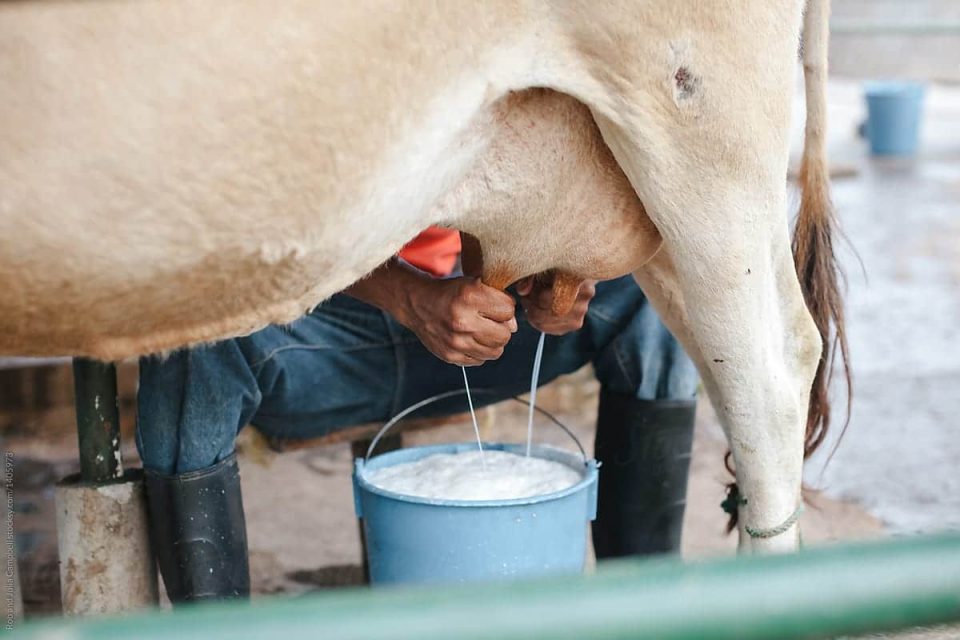Ten trusted ways to achieve peak milk yield through choice nutrition and health strategies
By Alex Gathii
Successfully guiding cows through early lactation is key to their health and performance. Nutrition and health during early lactation greatly affects peak milk yields. Preventing health problems and having good feed practices can improve peak milk yields.
What is peak milk?
Peak milk is the highest recorded test day milk production in a cow’s first 150 Days in Milk, DIM. Historically, producers used peak milk as a measure of the success of dry period and early lactation nutrition and management. Peak milk indicates how well the cow responds to feeding practices during the dry period, calving and early lactation periods.
Most cows achieve peak milk by 45 to 90 DIM and then slowly lose production over time. Many cite that each added half a litre of peak milk could lead to 100litres more milk for the whole lactation. Nutrition and health disorders in early lactation affect peak milk. For example, low dietary fiber diet/sorting can lead to rumen acidosis, which can result in lameness or displaced abomasum. Both conditions can cause reduced peak milk.
Ten ways to improve early lactation performance and peak milk yield
- Start cows with a successful dry period
Research shows dry period nutrition and management affects health and performance after birth. Thus, evaluate your dry cow program if you’re unhappy with milk cow performance. Key goals for dry cows include:
- Maintaining dry matter intake (12 to 14 kgs per day)
- Avoiding overfeeding energy
- Preventing Body Condition Score (BCS) gain
- Optimizing comfort
- Addressing hoof health
- Prevent subclinical milk fever
Reduce the risk of subclinical milk fever (low blood calcium) during the first week of lactation. Low blood calcium (less than 8.0 milligrams deciliter) correlates with the following;
- Ketosis
- Higher somatic cell count
- Delayed uterine involution
- Metritis
- Depressed feed intake
- Reduced milk yield
- Optimize feed intake immediately after calving
- Provide 40 to 60 litres of warm water with drinkable drench.
- Allow access to fresh Total Mixed Ration (TMR)
- Provide 2 to 4 kgs of Lucerne/grass hay.
- Keep the feed bunks clean and fresh.
- Optimize cow comfort
To optimize cow comfort in the fresh cow group, use a stocking rate at 80 to 85 percent of capacity. Keep cows in a fresh cow group for 14 to 21 days and provide 30 to 36 inches of bunk space per cow. Reduce social stress (especially for first calf heifers), prevent cows from separating from the normal herd mates and invest in cow cooling for dry and lactating cows.
- Maintain rumen health and prevent ruminal acidosis
Providing a flake of Lucerne/grass hay for the first five days after calving would be very helpful. Early lactation diet should contain plenty of good quality digestible fiber (31 to 35 percent Neutral Detergent Fiber, (NDF). We advise that a farmer maintain fiber mat with consistent feed intake and avoid empty bunks, provide free choice buffer, and monitor buffer intake. It is critical to minimize the risk of slug feeding or diet sorting that may result in rumen acidosis (low rumen pH; sour stomach).
- Identify cows with a history of metabolic or health problems
Cows with a history of milk fever, ketosis or mastitis are likely to face these problems again. Keeping an eye on cows prone to health problems allows you to help prevent these problems.
For example, move cows carrying twins or first calf heifers into the dry group early. Data shows a correlation with a 7 to 10 days earlier calving date.
- Evaluate BCS
The target BCS at calving is 3.0-3.25. You should avoid having cows reach a BCS greater than 4. A lower BCS at calving allows for 0.5 to 1.0 units of BCS within herd variation. This provides a safety margin to avoid overweight cows that have a higher risk for ketosis and fatty liver and are often more difficult to breed back.
- Position feed additives
Fresh cow groups are most likely to offer a Return on Investments, ROI for feed additives. Studies support the following additives:
- Ionospheres increase glucose availability.
- Rumen-protected choline improves liver health and function.
- Protected amino acids meet amino acid requirements without overfeeding protein.
- Supplemental protected fat increases energy intake.
- Yeast culture stabilizes rumen fermentation.
- Avoid anti-nutritional factors
Anti-nutritional factors include feeds containing mold, wild yeast and poorly fermented feeds. Mold counts over 100,000 colonies per gram likely decrease feed intake and diet digestibility.
- Feed correct amounts of antioxidants
Antioxidants (for example, vitamin E and selenium) help reduce the impact of oxidative stress. Oxidative stress could be too much fat mobilization, poor air quality or injury. All these decrease the efficiency of immune system function.
Mr Gathii is aUSAID Champion of Change and certified cowsignals trainer

